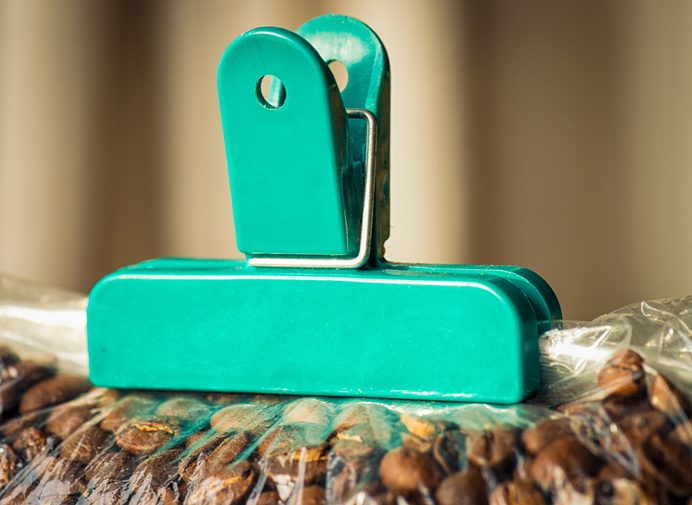Listen, I know that cats are the heroes of the internet. They’re adorable, they’re sassy, their independent, and many millions of people enjoy caring for them for years after inviting them into their families and homes.
That said, every single one of those same people knows, deep in their hearts, that their beloved feline could turn on them at any time. Cats can and will bite the literal hands that feed them (and any feet that walk past) because cats give zero f**ks – and if we’re being honest, that’s one of the things we love about them.
But whether you’re looking for a way to protect yourself from the random attack at home or you work with feral or otherwise abandoned cats, it’s always good to know how you can keep yourself safe whenever possible.
So, here are 8 tips for defending yourself against a cat attack.
7. Try a chip-clip.

Image Credit: iStock
Lead veterinarian on the pet assistance app FirstVet, Shawna Garner, offers this surprising advice:
“Low tension clips similar to chip bag clips placed on the lower dorsal neck area just above the shoulders have been shown to decrease anxiety and release endorphins to help calm a cat.”
Who knew?
6. Don’t jerk away.

Image Credit: iStock
I know it’s not your first reaction, but the best thing to do if a cat gets ahold of you with its teeth or claws is to stay as still as you can manage.
“When in the act of getting bitten by a cat, the best response is to try not to panic, and allow the cat to flee. Cats often do not bite and latch on. They will continue to bite, back away, and strike again.
Do not try to shake your hand or yank your hand out of the cat’s mouth.
Instead, as soon as you feel the cat’s grip loosen, calmly back away.”
Mind over matter, folks. Mind over matter.
5. Distraction.

Image Credit: iStock
Just like with a toddler, Garner says you can try employing distraction as a technique with a cat that seems hellbent on attacking.
“Using cat treats can help, but during times of stress some cats are not interested in treats.
Toys are a great distraction as well, as it keeps their focus away from events taking place.”
Keep in mind that this technique doesn’t work all of the time, so be prepared to back out of the room if it doesn’t.
4. Wear gloves (and maybe goggles).

Image Credit: iStock
If you’re someone who works with cats, or you absolutely need to handle your cat even when it’s upset or hurt, you should take precautions ahead of time like donning gloves, goggles, boots, long sleeves, and pants.
3. Employ a time-out.

Image Credit: iStock
Everyone and everything in the world can use a time-out now and then, so if you can close the cat in a room or space by itself for a little while, that may be the way to go.
Shut the door, go have a glass of water and breathe for a bit, and then try again later.
2. Don’t cut off their escape route.

Image Credit: iStock
If you’re between a cat and its escape route, you’re just setting yourself up for trouble.
Cats are animals and predators at that, so they really don’t like being cut off from their escape route and path to safety if they can help it.
1. Use a towel.

Image Credit: iStock
Grabbing a towel or some other fabric to put between you and the cat might work, or Garner says you could also possibly toss a towel over the cat to diffuse the immediate danger.
“Allowing a cat to hide in a towel can help them relax, as some cats will immediately calm down if they feel they are hiding and they cannot see you.”
You can also use a towel to scoop up and angry cat who needs to be carted to the vet or otherwise relocated, but this will likely make them even angrier, so take care in how you do it.
“If the cat is not stressed, placing a hand under the abdomen and wrapping your other hand around them to cradle them is the best way to move them, keeping them hugged to your body so they feel secure.”
I wish that no one reading this would ever have to be at odd with a cat, but that circumstance is honestly pretty common.
Have you ever had to defend yourself against a cat? How did you do it? Tell us your story in the comments!

